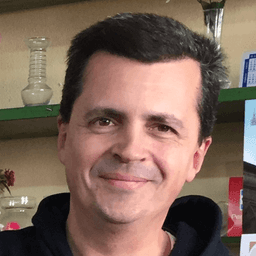Enhancing Personal Security: AccelOne's Solution for Personal Safety App
Modernizing Personal Safety: AccelOne's enhancements boost the personal safety app's stability, scalability, and user experience.
Written by Luis Paradela|Posted on September 28, 2020

Business Requirement
To regain market competitiveness and increase subscription rates, a personal safety app needed a comprehensive overhaul of its outdated backend infrastructure and mobile app components. The legacy architecture led to feature failures, high operational costs, and poor user experience, compromising the app’s ability to provide reliable protection services. The client sought a modern, scalable, and stable solution to restore and enhance its functionalities, ensuring user safety and satisfaction.
Business Solution
AccelOne provided a comprehensive solution to modernize and stabilize the personal safety app. The approach focused on updating the backend infrastructure, enhancing the mobile app, and ensuring seamless video processing and user registration functionalities. The solution was implemented in two phases:
Phase 1:
Partial Mobile App Update: Updated libraries and frameworks for both iOS and Android apps. Parallel Backend Creation: Developed a Node.js + Express backend parallel to the legacy system, utilizing the same database. Feature Restoration: Restored several app features, although video processing and sign-up issues persisted.
Phase 2:
Complete Backend Rewrite: Rebuilt the backend entirely in Node.js + Express with a modern infrastructure. Media Server Creation: Developed a Node.js-based media server to handle video processing. iOS App Migration: Migrated the iOS app to Swift 5, updated libraries, and ensured compatibility with the latest iPhone models. Issue Resolution: Fixed video and sign-up issues, rewriting most video sections for improved performance.
Technical Solution
AccelOne's technical solution involved the following components:
Backend Development: Node.js + Express for the backend, with a modern infrastructure architecture. Media Server: Node.js-based media server for efficient video processing. iOS App Migration: Migration to Swift 5, updating libraries, and ensuring compatibility with the latest iPhone models. Frameworks and Tools: Crash/Bug Monitoring: Implemented to ensure app stability and track performance across different devices.
The dedicated team from AccelOne included:
Senior iOS Engineer Senior Backend Engineer Technical Project Manager QA Engineer
Challenges
Reverse Engineering: Required to rebuild backend components by reviewing legacy code and additional components for the back office website and events page. Legacy System Compatibility: Ensuring the new backend and media server worked seamlessly with the existing database and systems.
Approach
AccelOne addressed these challenges by integrating their team with the client's internal teams. The project was divided into several phases, focusing on different aspects of the app and backend enhancement:
Preparation: Established a complete understanding of the app and identified critical points for testing and development. Development and Testing: Updated and migrated app components, created a new backend and media server, and performed rigorous testing to ensure stability and performance. Issue Resolution and Optimization: Focused on fixing existing issues and optimizing the app for better user experience and reliability. Results Increased Stability: The new version of the application and its backend proved to be stable and scalable, addressing most of the previous version's problems. Enhanced Video Processing: The new media server simplified video processing, making it faster and always available. Feature Reliability: All features are now working as expected, and the platform is gaining new subscriptions every week. Improved User Experience: Users of the latest iPhone devices now enjoy a much better experience due to updates and optimizations. Future-Proofing: The app's code base was migrated to the latest versions of languages and frameworks, ensuring better support for modern mobile OS versions.
Conclusion
AccelOne’s collaboration with the personal safety app successfully addressed critical business challenges, driving stability, scalability, and user satisfaction. The enhanced app now provides a reliable and seamless user experience, reduces operational costs, and meets the highest standards of quality and security, ensuring long-term success and client satisfaction.

Luis Paradela
Chief Development Officer
Co-Founder
Buenos Aires
View profile